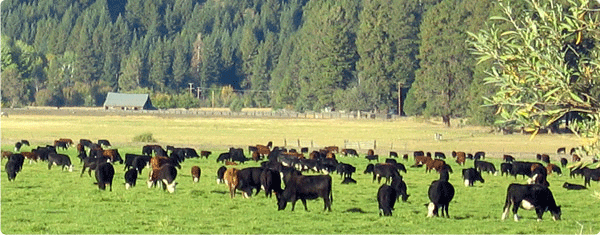
A Farm in California. (Photo: California Department of Food and Agriculture)
General Guidance in Reading California’s Food and Agricultural Code
Promoting and protecting the agricultural industry of the state and for the protection of the public health, safety, and welfare.
By Chris Micheli, June 20, 2022 6:57 am
California’s statutes are contained in 29 separate codes. The twelfth alphabetically is the Food and Agricultural Code. All 29 Codes have general provisions applicable to reading and interpreting that Code’s sections. The following are selected general provisions of the Food and Agricultural Code:
Section 1 – This Act is known as the “Food and Agricultural Code.”
Section 2 – It is hereby declared, as a matter of legislative determination, that the provisions of this Code are enacted in the exercise of the power of this state for the purposes of promoting and protecting the agricultural industry of the state and for the protection of the public health, safety, and welfare. In all civil actions, the provisions of this Code are to be liberally construed for the accomplishment of these purposes and for the accomplishment of the purposes of the several divisions of this Code, and in criminal actions the rule of construction set forth in Section 4 of the Penal Code is to be the rule of construction for this Code.
Section 4 – The provisions of this Code, insofar as they are substantially the same as existing law, are restatements and continuations of existing law, and not new enactments. The enactment of this Code does not impair any privilege granted or right acquired under any of the laws of this state prior to the date it takes effect.
Section 9 – Unless a different penalty is expressly provided, a violation of any provision of this Code is a misdemeanor.
Section 10 – Whenever any notice, report, statement, or record is required by this Code, it must be in writing unless it is expressly provided that it may be oral.
Section 11 – Whenever any notice, report, statement, or record is required by this Code to be kept or made in writing, it must be in the English language.
Section 12 – Unless otherwise specifically provided, whenever any document is required or permitted by this Code to be recorded, the document must be recorded in the office of the county recorder of the county in which the property or thing which is affected is situated.
Section 13 – Whenever any power or authority is given by this Code to any person, it may be exercised by any deputy, inspector, or agent who is duly authorized by him.
Section 15 – Whenever reference is made to any portion of this Code or of any other law of this state, the reference applies to all amendments and additions to it.
Section 16 – Division, part, chapter, and article headings do not in any manner affect the scope, meaning, or intent of the provisions of this Code.
Section 17 – If any provision of this Code or its application to any person or circumstance is held invalid, the remainder of the Code or the application of the provision to any other person or circumstance is not affected.
Section 18 – In all matters which arise under this Code, proof of the fact of possession by any person engaged in the sale of a commodity establishes a rebuttable presumption that the commodity is for sale. This presumption is a presumption affecting the burden of producing evidence.
Section 19 – Unless the context otherwise requires, the present tense includes the past and future tenses, and the future tense includes the present tense.
Section 20 – Unless the context otherwise requires, the masculine gender includes the feminine and neuter.
Section 21 – Unless the context otherwise requires, the singular number includes the plural, and the plural the singular.
Section 24 – It is hereby declared, as a matter of legislative determination, that the provisions of this section are enacted in the exercise of the power of this state for the purpose of protecting and furthering the public health and welfare. It is further declared that the floriculture and nursery industry of this state is affected with a public interest.
Section 24.5 – Inasmuch as plants growing in native stands or planted for ornamental purposes contribute to the environmental and public health and welfare needs of the people of the state, the Legislature hereby finds and declares that these plants are to be considered as a part of the agricultural industry for the purpose of any law that provides for the protection of the agricultural industry from pests.
Section 25 – Unless the context otherwise requires, the definitions in the specified sections govern the construction of this Code.
Section 47 – The term “shall” is mandatory, and “may” is permissive.
- Emergency Protective Orders in California - July 9, 2025
- Recreational Marinas in California - July 8, 2025
- Summons in California Civil Actions - July 7, 2025








One thought on “General Guidance in Reading California’s Food and Agricultural Code”